MaryAnn Bernal's Blog, page 170
June 15, 2015
History Trivia - El Cid captures Valencia from the Moors
June 15
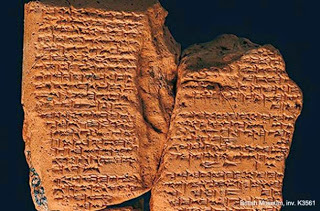
763 BC Assyrians recorded a solar eclipse that was later used to fix the chronology of Mesopotamian history.
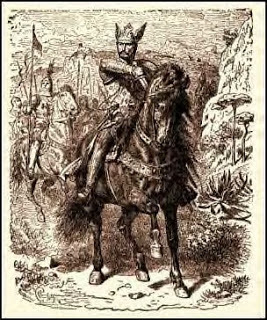
1094 El Cid, the great Spanish national hero, captured Valencia from the Moors.
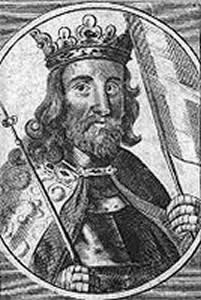
1219 King Valdemar brought victory for Denmark. According to legend, the Danish flag fell from the sky during the Battle of Lyndanisse (now Tallinn) in Estonia, turning the tide in favor of the Danes.

763 BC Assyrians recorded a solar eclipse that was later used to fix the chronology of Mesopotamian history.

1094 El Cid, the great Spanish national hero, captured Valencia from the Moors.

1219 King Valdemar brought victory for Denmark. According to legend, the Danish flag fell from the sky during the Battle of Lyndanisse (now Tallinn) in Estonia, turning the tide in favor of the Danes.
Published on June 15, 2015 02:30
June 14, 2015
Happy 240th Birthday to the U.S. Army!

"Two hundred forty years ago, our nation's leaders established the Continental Army. Today, the Army is the strategic landpower of the joint force; called upon to prevent, shape, and win against our adversaries.
"This year, we celebrate 240 years of selfless service to the nation. Selfless service is at the core of what it means to be a Soldier - putting the welfare of others ahead of oneself. The willingness of our Soldiers - to place themselves in harm's way and to protect our nation's freedoms - is what makes us the premier all-volunteer force. The Army has served proudly, faithfully, and selflessly for 240 years, and we remain steadfast in our commitment."
Much more at Army.mil.
Soldiers Angels Germany
Published on June 14, 2015 08:19
Magna Carta's legacy lives on 800 years later
USA Today

Photo: Joseph Kaczmarek, AP
LONDON — Eight centuries ago this Monday, a peace treaty came into being that would become a pillar of English law and the basis of constitutional democracies in the United States and around the world hundreds of years later.
Rebel barons made King John of England seal the Magna Carta — the Great Charter — on June 15, 1215 in a bid to limit the power of the monarch, who they viewed as cruel and greedy.
The document set out the principle that everybody was subject to the law, even the king, for the first time on written record.
Some of its key principles influenced the U.S. Bill of Rights, the Universal Declaration of Human Rights and many legal systems around the world.
On Monday Queen Elizabeth II, her husband Prince Philip, Prince William and other dignitaries will mark the anniversary in Runnymede in the county of Surrey, near London, where King John sealed the charter.
A statue of the Queen was unveiled near the site Sunday, and the royal barge Gloriana was leading 200 boats along the River Thames to Runnymede over the weekend.
Surrey County Council, one of the organizers of the ceremony, said: "Magna Carta was a milestone in world history and its birthplace at Runnymede deserves a lasting legacy."
The four known surviving copies of the charter are kept at the cathedrals of the cities of Lincoln, northeast England and Salisbury in the south, and two are housed in the British Museum.
 A library employee points at the Salisbury Magna Carta in The British Library in London, Britain, February 2, 2015. (Photo: Facundo Arrizabalaga, European Pressphoto Agency)So how has a document that began almost a millennium ago become such a profound part of life as we know it today?
A library employee points at the Salisbury Magna Carta in The British Library in London, Britain, February 2, 2015. (Photo: Facundo Arrizabalaga, European Pressphoto Agency)So how has a document that began almost a millennium ago become such a profound part of life as we know it today?
Historians say Magna Carta is even more revered in the United States than it is in England.
"The basis of the Magna Carta is a bastion against tyranny and against over-mighty government," Derek Taylor, the author of the book Magna Carta in 20 Places, told USA TODAY. He said the charter's importance in the U.S. "can't be under-estimated."
"There's something about the Magna Carta that rings a bell and chimes with the fundamental American belief about the way society should organize itself," he said.
However, the brutality against Native Americans and slaves and the treatment of women and slave descendants as second-class citizens for generations after the signing of the Constitution, show that "it took a long time for those words to have any meaning," he added.
Due process can be traced to Chapter 39 of Magna Carta, and is incorporated into the Fifth Amendment, which includes the provision that that no person shall be " deprived of life, liberty, or property, without due process of law."
In an article called Magna Carta in the United States, Ralph Turner, emeritus history professor at the University of Florida, says: "For America's founding fathers, Magna Carta symbolized the "rule of law," the precept that a government is bound by the law in dealing with its people.
"This view was set forth first in the Declaration of Independence, then in the state constitutions of the former thirteen colonies, and in the fifth and fourteenth amendments to the federal Constitution."
Sir Robert Worcester, chairman of the Magna Carta 800th Anniversary Commemoration Committee, which is coordinating events to mark the milestone, told the Telegraph: "It is probably the most important document that sets out a legal basis upon which to act other than the whim of the monarch King John in 1215."
"The relevance of the Magna Carta in the 21st century is that it is the foundation of liberty, some say the foundation of democracy, not counting Athenian (ancient Greek) democracy of course," he said.
"All of those things are relative today, all of them in law in one way or another today. And not only here (Britain) but in over 100 countries affecting the lives of over a billion people in the world today in the 21st century."

Photo: Joseph Kaczmarek, AP
LONDON — Eight centuries ago this Monday, a peace treaty came into being that would become a pillar of English law and the basis of constitutional democracies in the United States and around the world hundreds of years later.
Rebel barons made King John of England seal the Magna Carta — the Great Charter — on June 15, 1215 in a bid to limit the power of the monarch, who they viewed as cruel and greedy.
The document set out the principle that everybody was subject to the law, even the king, for the first time on written record.
Some of its key principles influenced the U.S. Bill of Rights, the Universal Declaration of Human Rights and many legal systems around the world.
On Monday Queen Elizabeth II, her husband Prince Philip, Prince William and other dignitaries will mark the anniversary in Runnymede in the county of Surrey, near London, where King John sealed the charter.
A statue of the Queen was unveiled near the site Sunday, and the royal barge Gloriana was leading 200 boats along the River Thames to Runnymede over the weekend.
Surrey County Council, one of the organizers of the ceremony, said: "Magna Carta was a milestone in world history and its birthplace at Runnymede deserves a lasting legacy."
The four known surviving copies of the charter are kept at the cathedrals of the cities of Lincoln, northeast England and Salisbury in the south, and two are housed in the British Museum.
 A library employee points at the Salisbury Magna Carta in The British Library in London, Britain, February 2, 2015. (Photo: Facundo Arrizabalaga, European Pressphoto Agency)So how has a document that began almost a millennium ago become such a profound part of life as we know it today?
A library employee points at the Salisbury Magna Carta in The British Library in London, Britain, February 2, 2015. (Photo: Facundo Arrizabalaga, European Pressphoto Agency)So how has a document that began almost a millennium ago become such a profound part of life as we know it today?Historians say Magna Carta is even more revered in the United States than it is in England.
"The basis of the Magna Carta is a bastion against tyranny and against over-mighty government," Derek Taylor, the author of the book Magna Carta in 20 Places, told USA TODAY. He said the charter's importance in the U.S. "can't be under-estimated."
"There's something about the Magna Carta that rings a bell and chimes with the fundamental American belief about the way society should organize itself," he said.
However, the brutality against Native Americans and slaves and the treatment of women and slave descendants as second-class citizens for generations after the signing of the Constitution, show that "it took a long time for those words to have any meaning," he added.
Due process can be traced to Chapter 39 of Magna Carta, and is incorporated into the Fifth Amendment, which includes the provision that that no person shall be " deprived of life, liberty, or property, without due process of law."
In an article called Magna Carta in the United States, Ralph Turner, emeritus history professor at the University of Florida, says: "For America's founding fathers, Magna Carta symbolized the "rule of law," the precept that a government is bound by the law in dealing with its people.
"This view was set forth first in the Declaration of Independence, then in the state constitutions of the former thirteen colonies, and in the fifth and fourteenth amendments to the federal Constitution."
Sir Robert Worcester, chairman of the Magna Carta 800th Anniversary Commemoration Committee, which is coordinating events to mark the milestone, told the Telegraph: "It is probably the most important document that sets out a legal basis upon which to act other than the whim of the monarch King John in 1215."
"The relevance of the Magna Carta in the 21st century is that it is the foundation of liberty, some say the foundation of democracy, not counting Athenian (ancient Greek) democracy of course," he said.
"All of those things are relative today, all of them in law in one way or another today. And not only here (Britain) but in over 100 countries affecting the lives of over a billion people in the world today in the 21st century."
Published on June 14, 2015 08:14
History Trivia - Juan Borgia, favorite son of Pope Alexander VI, murdered
June 14
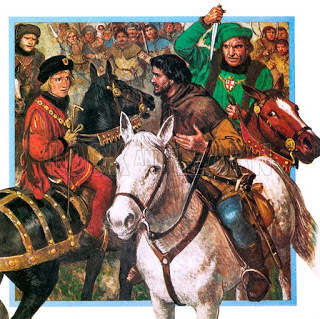
1381 The Peasant's Revolt, led by Wat Tyler, climaxed when rebels plundered and burned the Tower of London, and killed the Archbishop of Canterbury.

1497 Giovanni (Juan) Borgia, favorite son of Pope Alexander VI, was murdered, allegedly by his brother Cesare or by his younger brother Gioffre.
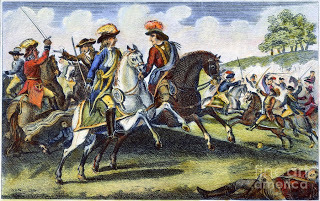
1645 Oliver Cromwell routed the Royalists at the Battle of Naseby, giving parliament victory in the civil war.

1381 The Peasant's Revolt, led by Wat Tyler, climaxed when rebels plundered and burned the Tower of London, and killed the Archbishop of Canterbury.

1497 Giovanni (Juan) Borgia, favorite son of Pope Alexander VI, was murdered, allegedly by his brother Cesare or by his younger brother Gioffre.

1645 Oliver Cromwell routed the Royalists at the Battle of Naseby, giving parliament victory in the civil war.
Published on June 14, 2015 02:30
June 13, 2015
OwenSage Everville - Catching up with author Mary Ann Bernal
 OwenSage Everville
OwenSage EvervilleCatching up with author Mary Ann Bernal

You may or may not know:
One of the best surprises was delivered via Federal Express when Mary Ann received a thank you signed by the marines serving aboard the USS Ronald Reagan along with a lovely blue throw blanket with the USS Ronald Reagan emblem stitched into the fabric. This was in response to her book donation for their reading pleasure - boxes of signed copies of her work.
After visiting the Thetford Priory Ruins in Norfolk, UK, Mary Ann learned that Ghost Hunters had featured the site, which is reputedly haunted. She did not see any specters, much to her disappointment.
Being a proud Trekker, Mary Ann attended Star Trek conventions in New York City and also visited the Star Trek Experience at the Las Vegas Hilton where she can be found on the Voyager bridge next to Captain Janeway.
What have you been up to?
This year’s project was a collection of short stories that are available in all formats, electronic, print and audio.
This quote sums up the series.
As a reader, I really enjoy the series. I'm always surprised by the twists and like how each story is different from the last one. Roberto S. Chicago
Scribbler Tales - contemporary short stories
Scribbler Tales is a unique mix of genres in one anthology rich with tension, humanity and genuine emotion. Unconventional settings and unexpected twists are bound to leave you pondering long after you close this book.”
Volume One
In Desperate Measures, Audrey learns of Paul’s duplicity when human cloning experiments go awry. Forbidden Lore beckons Arianna and Ethan into a haunted cemetery where they are confronted by a gathering of witches with evil intent . Adrian must challenge his father to marry Rina or suffer the fate of star-crossed lovers in Forever Lost. In The Hourglass, Flair makes a covenant with the Devil to keep Brice alive. Aaron reflects upon his childhood as a military brat in Sail with Me.
Volume Two
Madeline’s personal feelings clouds her judgment in Broken Promises where she must choose between love and obeying the law. When the guilty walk, a vigilante executes the criminals in Deception. Endgame finds a government researcher running for her life after discovering a horrific CIA secret in the isolated facility. A modern day Don Juan’s life is turned upside down in Malice when he is falsely accused of rape. In The Portrait, Holliday is obsessed with a formidable ancestor whose spirit wishes to possess her soul.
Volume Three
When a highly classified schematic of a prototype engine is stolen, the evidence points to an inside job in Hidden Lies. In Nightmare, Melanie’s childhood demons carryover into adulthood when she returns to her ancestral home. Detective Newport races against time to apprehend a killer targeting prosecuting attorneys in Payback. The Night Stalker is not a figment of Pamela’s imagination as she tries to convince the police that her life is in danger. While trying to identify a serial arsonist, a Fire Marshall suspects a highly decorated firefighter in Turning Point.
Volume Four
When the daughter of a wealthy entrepreneur is kidnapped, Agent Richards races against time to find her in Abducted. In Cunning, newlywed Charlotte von Lichtner is obsessed with Transylvanian folklore when she encounters her husband’s mysterious kinsman. Enamored finds Lady Margaret besotted with a younger man whose intentions are suspect in their unorthodox relationship. Will the murderer succeed as he flees the crime scene in Reckless? Doctor/patient confidentiality is sorely tested when Sarah reveals the truth about her lover’s death in Safeguard.
Volume Five
In her quest for immortality, Lilly considers a Satanic covenant before the portal closes on All Hallows’ Eve in Bloodlust. When Felicity meets exotic Seth on a flight to Luxor, her fairy tale vacation is threatened by tomb robbers in Illusion. Manhunt finds Tami and Mick suspecting the newest member of their team while planning one final heist at the Diamond Exchange. Dr. Brenda Lancaster must develop a cure for a mutated pathogen before mankind becomes extinct in Pandemic. Angela plots her husband’s death in Revenge, unaware it may cost her the freedom she seeks.
For more information, kindly visit:
maryannbernal.com
whisperinglegendspress.com

Published on June 13, 2015 05:25
History Trivia - Coronation of Alexander III as King of Scots
June 13
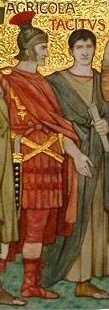
37 Gnaeus Julius Agricola was born. He was a Roman general noted for conquering all of England and part of Scotland (77-84).
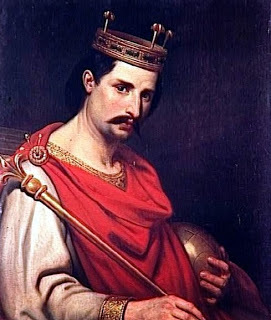
823 Charles I (the Bald) was born. He was the Grandson of Charlemagne who with his two half brothers divided Charlemagne's empire into three parts, with Charles becoming the first king of France (843-877).
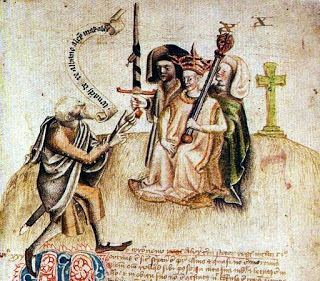
1249 Coronation of Alexander III as King of Scots.

37 Gnaeus Julius Agricola was born. He was a Roman general noted for conquering all of England and part of Scotland (77-84).

823 Charles I (the Bald) was born. He was the Grandson of Charlemagne who with his two half brothers divided Charlemagne's empire into three parts, with Charles becoming the first king of France (843-877).

1249 Coronation of Alexander III as King of Scots.
Published on June 13, 2015 02:00
June 12, 2015
History Trivia - Peasants' Revolt in England
June 12
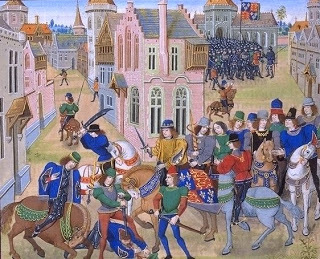
1381 Peasants' Revolt in England, rebels arrived at Blackheath. Although the revolt did not succeed in its stated aims, it did succeed in showing the nobility what the peasants were capable of, which helped to form a radical tradition in British politics.
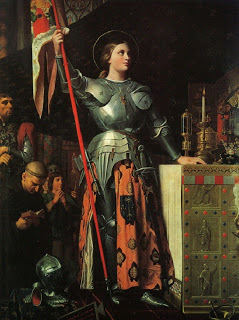
1429 Hundred Years' War: Joan of Arc led the French army in their capture of the city and the English commander, William de la Pole, First Duke of Suffolk in the second day of the Battle of Jargeau.
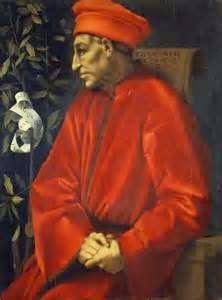
1519 Cosimo de Medici was born.

1381 Peasants' Revolt in England, rebels arrived at Blackheath. Although the revolt did not succeed in its stated aims, it did succeed in showing the nobility what the peasants were capable of, which helped to form a radical tradition in British politics.

1429 Hundred Years' War: Joan of Arc led the French army in their capture of the city and the English commander, William de la Pole, First Duke of Suffolk in the second day of the Battle of Jargeau.

1519 Cosimo de Medici was born.
Published on June 12, 2015 02:30
June 11, 2015
Ancient Rome's Aqueducts Held Less Water Than Previously Thought

The aqueducts of the Roma Vecchia delivered water to ancient Rome. A new analysis
 suggests the aqueduct carried less water than previously thought.
suggests the aqueduct carried less water than previously thought.Credit: Bruce Fouke
Live Science
The majestic aqueduct that fed water to ancient Rome carried less of the life-giving liquid than previously thought, new research
 suggests.
suggests.The Anio Novus aqueduct carried water from the mountains into Rome at a rate of about 370 gallons of water per second, said lead author Bruce Fouke, a geologist and microbiologist at the University of Illinois at Urbana-Champaign.
"That's enough water, per second, to take a three-hour shower or to take seven baths," Fouke said in a statement.
While that may sound like a lot, previous analyses had given a higher water flow, the researchers said. [Photos: Amazing Ruins of the Ancient World]
Ancient aqueducts
The Anio Novus aqueduct drew from the Aniene River, high in the Appennine Mountains. The ancient aqueduct snaked 87 miles (54 kilometers) down the hillsides into the heart of Rome. It was built over 14 years beginning in A.D. 38. This impressive engineering feat was one of the main reasons the Roman population could grow from 600,000 to 1 million during the first century A.D., Fouke said.
However, until recently people weren't sure exactly how much water the aqueduct carried. Water commissioner Sextus Julius Frontinus calculated the flow rate in A.D. 97 in his treatise "De Aquis." But his estimates aren't reliable
 because he had no way of measuring water volume and speed, the researchers said. In addition, some of his numbers didn't add up, which he blamed on measurement error and water fraud.
because he had no way of measuring water volume and speed, the researchers said. In addition, some of his numbers didn't add up, which he blamed on measurement error and water fraud.Other researchers tried to estimate water volume from average water speeds. But because the slope varied and the water didn't just travel in one straight path down from the mountains, its speed could change by as much as 3.3 feet per second (1 meter/second) in some places. That, in turn, changed how much water would have been delivered at the source.
To get around this, Fouke and his colleagues studied the limestone that had caked onto the aqueduct at the Roma Vecchia in Rome. The limestone, called travertine, was dissolved in the water and gradually settled out onto the infrastructure
 . The thickness and shape of the deposit can reveal the average water level. The travertine at Roma Vecchia suggested the aqueduct was nearly always filled to the brim.
. The thickness and shape of the deposit can reveal the average water level. The travertine at Roma Vecchia suggested the aqueduct was nearly always filled to the brim.But the travertine also reduced the effective volume of the aqueduct, leading to about 25 percent less flow than had previously been calculated, the researchers found in a study that was published online
 in the Journal of Archaeological Science.
in the Journal of Archaeological Science.Still, the number is impressive. The water supply would have supported antiquity's most populous city.
"Regardless of the different estimates, researchers agree that these aqueducts were the core piece of infrastructure that permitted the large-scale urbanization," Fouke said.
And in the modern world, that's a lot of water. The average American household guzzles about 400 gallons of water a day, according to the Environmental Protection Agency, so the Anio Novus aqueduct would have supported nearly 80,000 families.
Published on June 11, 2015 07:37
Burned Bones in Alexander the Great Family Tomb Give Up Few Secrets
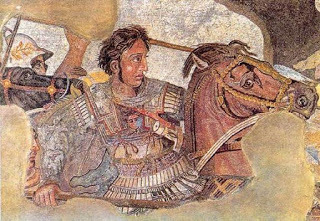 A mosaic of Alexander the Great from the House of the Faun, Pompeii, c. 80 B.C.
A mosaic of Alexander the Great from the House of the Faun, Pompeii, c. 80 B.C.Credit: National Archaeologic Museum, Naples, Italy
Live Science
It's a mystery worthy of Sherlock Holmes, with a backstory that puts "Game of Thrones" to shame: Who was laid to rest in a lavish, gold-filled Macedonian tomb near Vergina, Greece? The tomb, discovered in 1977, might be the final resting place of Philip II of Macedon, conqueror of Greece and father of Alexander the Great, who would push his father's empire to the edge of India.
Or, it might be the grave of the distinctly less impressive Philip III Arrhidaios (also written as Arrhidaeus), the half brother of, and figurehead successor to, Alexander the Great.
The latest volley in the debate over which Philip occupies the tomb makes a case for the illustrious Philip II, arguing that the woman found interred alongside the much-debated male body was too old to have been the younger Philip's wife. But this new research seems unlikely to resolve the great Macedonian tomb mystery. [A complicated history
Archaeologists discovered the contentious tomb in 1977. Amid paintings and pottery was a gold sarcophagus containing a man's cremated bones. Nearby were the even-more-fragmentary burned bones of a woman.
 [image error]
[image error]
 This cremated male skeleton may belong to Alexander the Great's father … or his half brother.
This cremated male skeleton may belong to Alexander the Great's father … or his half brother.Credit: Jonathan Musgrave, University of Bristol.View full size imageThe tomb's discoverers declared the man was Philip II, who took the throne of Macedonia in 359 B.C. as regent for his infant nephew. Displaying the kind of initiative that defined the Macedonian royal family, Philip II quickly took the throne for himself and started conquering his neighbors.
This went well until 336 B.C., when one of Philip II's bodyguards assassinated him as he walked into a theater in the Macedonian capital of Aegae. It's not entirely clear why the king was murdered; ancient historians told various tales, including one in which the murderer was a former male lover of Philip who had hounded another of Philip's male lovers to suicide and then was himself subjected to sexual assault by one of Philip's in-laws as revenge for that suicide. Some argued that Philip's fourth wife, Olympias, who was rumored by the historian Plutarch to sleep with snakes, had something to do with it.
Regardless of whether Olympias was that diabolical, she certainly knew how to play politics — with bloody results. The queen moved quickly to put her own son, Alexander, on the throne. She arranged for Philip's two children by another wife, Cleopatra Eurydice, to be killed; Cleopatra Eurydice committed suicide by force soon after. Archaeologists who argue that the tomb at Vergina contains Philip II's bones have argued that the female remains found in the tomb belong to Cleopatra Eurydice. [The 10 Reasons Alexander the Great Was, Well, Great]
But not everyone believed the bones matched those of Philip II. In 1981, a further examination of the remains led to claims that the body instead belonged to Philip III Arrhidaios. After Alexander the Great died in 323 B.C. (under mysterious circumstances, naturally), Philip III Arrhidaios took the throne as a figurehead, with his niece and wife Eurydice (not the same person as his father’s seventh wife) as queen. Ancient historians described Philip III Arrhidaios as mentally unfit. Plutarch blamed Olympias for the mental issues, claiming she'd tried to poison Arrhidaios as a child, but Plutarch clearly was not Olympias' biggest fan, and modern historians are skeptical.
Eurydice, however, was a force to be reckoned with. Her attempts to grab real power put her on a collision course with Olympias and her allies. In 317 B.C., during a war over secession, Olympias' forces defeated the king and queen — Philip III Arrhidaios and Eurydice. He was executed, and she was forced to commit suicide. As if that weren't enough indignity, their bodies were dug up more than a year later and cremated for a royal funeral meant to shore up legitimacy for the next king.
Archaeological arguments
Much of the debate around whether the tomb belongs to Philip II or Philip III Arrhidaios has focused on the burned bones. In the 1980s, Jonathan Musgrave, an anatomist at the University of Bristol in the United Kingdom, created a facial reconstruction of the skull and argued that a notch in the bone over one eye matched historical descriptions of one of Philip II's battle wounds. In 2000, Greek paleoanthropologist Antonis Bartsiokas published a paper in the journal Science arguing that the bone notch and other features Musgrave had highlighted were simply incidental to cremation. (Musgrave does not agree.)
Another line of debate questions whether the bones show signs of warping, which occurs when flesh-covered bodies are cremated. If the bones of Philip III Arrhidaios were dug up and cremated months after the king's death, they might show less warping, or at least a different warping pattern compared with what would be found if the bones were cremated immediately. [See Photos of Another Alexander-Era Tomb Excavation]
Much of this argument falls by the wayside in the new paper, recently accepted for publication by the International Journal of Osteoarchaeology. The researchers, led by Theodore Antikas of Aristotle University in Greece, conducted a five-year forensic study of the bones, including computed tomography (CT) scans.
The researchers argue that the bones of the man and the woman were, in fact, cremated with the flesh still on; however, because Philip III Arrhidaios was not in the ground long enough to become completely skeletal before exhumation, this does little to distinguish the two men.
The new study likewise fails to find any evidence of an eye wound in the male skull, though the researchers did find a healing wound in the hand that might match one of Philip II's battle injuries. The male body also had growths called Schmorl's nodes on his lower vertebrae, a telltale sign of bone stress from horseback riding.
With no smoking guns to identify the male skeleton, the team turned to the female bones. Here, they argue, was a 30- to 34-year-old woman, also a horseback rider, who had a fractured leg bone that would have caused her left leg to be shorter than her right. Tellingly, a set of leg armor, or greaves, found in the tomb appears to be made to fit someone with a shortened left leg, Antikas wrote. This suggests the tomb artifacts, including a quiver holding 74 arrowheads, belonged to the woman buried in the tomb, pointing to her identity as a Scythian princess married to Philip II in 339 B.C. Scythia was a kingdom comprising what is now Central Asia and parts of Eastern Europe.
"The gorytus, arrowheads, spears and everything in the antechamber belong to a Scythian warrior woman and NOT to Philip or any other woman but the seventh wife/concubine, namely the daughter of King Ateas," Antikas wrote in an email to Live Science. (A gorytus is a case for bows and arrows.) Antikas declined to comment on other aspects of the study. If he’s right, however, the woman in the tomb is not the Macedonian Cleopatra Eurydice, but another, foreign bride of Philip II’s.
Bone backlash
But the move toward identifying the tomb's occupants based on the female skeleton rather than the male one brings its own controversy.
"Frankly, I am disappointed that the International Journal of Osteoarchaeology has published this article," said Maria Liston, an anthropologist at the University of Waterloo in Ontario who studies cremated remains in Greece. "I don't think it makes a substantive contribution to this debate, and it certainly does not refute the position of those who say the skeleton is not Philip II."
Among the problems with the new research, Liston said, is an overconfident approach to aging the skeletons. The researchers looked at the pubic symphysis, the cartilage-padded joint of the pubic bone, to peg the woman's age at between 30 and 34 years. But the method they used can't possibly determine age to that level of precision, Liston said. Rather, it can pinpoint the woman's age only to between 21 and 53 years old, she said.
The researchers also found that the fusion of the clavicle and sternum, or breastbone, to each other was almost complete. But that fusion blows their case out of the water, Liston said, because the bones begin to fuse by 19 or 20 years old and are usually done fusing within a few years, and are always fused entirely by age 29.
"It can't be the age they're saying," Liston told Live Science. If the woman was younger than 29, as the breastbone fusion suggests, she could well be Philip III Arrhidaios' wife Eurydice, who was only about 20 when she died.
Even the broken leg doesn't seal the case, Liston said. She's not convinced the asymmetrical greaves are made for someone with legs of two different lengths — one may simply have a lengthened flange that flared over the ankle, providing the leading leg with an extra bit of protection. Thus, the greaves may not belong to the woman in the tomb at all.
Other archaeologists contacted by Live Science declined to comment, citing the preliminary nature of the paper (the journal has not yet released a final version of the publication) or unfamiliarity with the burial context. The tombs at Vergina are an important cultural and tourist site in Greece and a UNESCO World Heritage Site, which raises the stakes of what would otherwise be a largely academic debate. The museum at Aigai, which oversees the tombs, refers to the tomb as Philip II's without caveat, as does UNESCO. But among archaeologists, nothing is settled. [The 7 Most Mysterious Archaeological Finds on Earth]
"We're never going to build a case that it's Philip II or Philip III that we could go into court and say, 'We have a positive ID,'" Liston said. She understands the draw of giving the skeleton a name, however.
"I'm as subject as anyone to the thrill of touching the past," she said. But whether the skeleton is Philip II or Philip III, she said, it's rare and exciting to be able to identify so closely a set of bones from more than 2,000 years ago — and either way, the tomb's occupant was a Macedonian royal.
"Frankly, to me, whoever it is, it's really cool," Liston said.
Published on June 11, 2015 07:30
Family Ties: 8 Truly Dysfunctional Royal Families
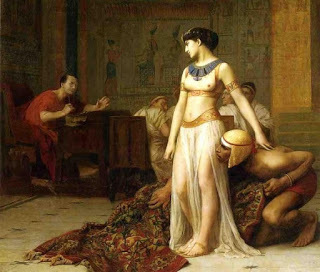 Cleopatra confronts Julius Caesar in this 1866 painting. She had been driven from the palace in Alexandria by her brother, Ptolemy XIII, whom she was also supposed to marry.Credit: Public Domain
Cleopatra confronts Julius Caesar in this 1866 painting. She had been driven from the palace in Alexandria by her brother, Ptolemy XIII, whom she was also supposed to marry.Credit: Public DomainLive Science
Grandma's stewing about something her sister said 20 years ago, Uncle Rupert's out teaching the kids about bottle rockets, and no one on dad's side of the family is currently speaking. If your family reunions look something like this, rest easy: You're still doing better than a great number of kings and queens throughout history.
With power and money comes dysfunction, as any number of royal families has proved. From palace assassinations to serial marriages, castle walls have seen it all.
1. Cleopatra, coming at you
Cleopatra is famous for her suicidal ending. What's less known is her bloody beginning — and the familial drama that brought her to power.
After her father's death, Cleopatra's younger brother Ptolemy XIII inherited the throne. She was meant to marry him, inbreeding being one way ancient royal families kept a grip on power. But her ambitions threatened him, and he had her exiled, according to Stacy Schiff's "Cleopatra" (Little, Brown and Company, 2010). So Cleopatra allied with Julius Caesar, retaking the throne with her other younger brother, Ptolemy XIV. That younger brother later died; Cleopatra may have poisoned him. She also had her younger sister Arsinoe IV, another rival, killed in 41 B.C.
Deadly sibling rivalry was common in the Ptolemy dynasty, according to Schiff. The complex family trees occasioned by inbreeding caused succession crisis after succession crisis, typically with deadly results.
"It was rare to find a member of the family who did not liquidate a relative or two," Schiff wrote.
2. Macedonian mayhem
Another surefire way to rile up a royal family is to have lots and lots of wives, all of which would like to see their own children installed on the throne. Alexander the Great's father, Philip II of Macedon, probably had seven wives, including Alexander's mother, Olympias.
Olympias may have had something to do with Philip II's assassination by a bodyguard in 336 B.C., according to some ancient historians, but the truth is fuzzy. According to a later account by the historian Cleitarchus, the bodyguard was a former lover of Philip II, who had taunted the king's new, younger, lover into suicide. Philip II's uncle-in-law allegedly sexually assaulted the bodyguard in retaliation, leading the bodyguard to kill Philip II in his own quest for revenge.
Whatever really happened, the Macedonian family dysfunction did not end with Philip II's generation. Alexander quickly started putting rival family members to death to secure his ascension to the throne, and Olympias had Philip II's last wife and her children killed. After Alexander died in 323 B.C., leaving a pregnant wife but no sure heir, his mentally disabled half-brother Philip III Arrhidaios (also spelled Arrhidaeus) was installed on the throne. Philip III's wife Eurydice attempted to turn this figurehead king into a real ruler; this put her in competition with Olympias in the ensuing wars of succession. Ultimately, Philip III was executed on Olympias' orders, and Eurydice forced to commit suicide. Their bodies were buried and then dug up about 17 months later for a royal cremation and funeral.
Olympias would not escape the succession wars unscathed. Captured not long after she had Philip III and Eurydice killed, she was stoned to death by relatives of people she had ordered executed.
3. Murder of a pharaoh
Harems are all fun and games until somebody gets their throat slit, as Ramesses III learned the hard way. This pharaoh ruled Egypt from 1186 B.C. to about 1156 B.C. — until somebody slashed his neck so deeply that modern archaeologists say he would have died instantly.
Ancient papyrus texts reveal that one of Ramesses III's minor wives, a woman named Tiye, was behind the plot; she was trying to get her son Pentaweret installed on the throne. Dozens of co-conspirators were sentenced to death, according to contemporary records, including Pentaweret. Archaeologists reported in 2012 they may have found the prince's mummy. The corpse in question has an agonized expression and overinflated lungs, consistent with death by suffocation or strangulation. He may have been forced to commit suicide, or he may have been buried alive. [In Photos: The Mummy of Ramesses III]
4. War of brothers
A conflict called the War of the Two Brothers can signal just one thing — a serious family meltdown. In 1527, the Inca king Huayna Capac died, leaving his kingdom to two of his sons, Atahualpa and Huáscar. (The two men had different mothers, as Inca rulers took multiple wives and concubines.)
Joint rule did not work out so well for the two new kings. By 1529, war broke out. Things got personal: According to Kim MacQuarrie's book "The Last Days of the Incas" (Simon & Schuster, 2008), Atahualpa at one point made a drinking cup out of the skull of one of Huáscar's generals.
The Inca civil war would hurry along the downfall of this civilization. In 1532, Francisco Pizarro's Spanish conquistadors appeared just as Atahualpa was declaring victory over his brother. The conquistadors captured Atahualpa and held him for ransom, though Atahualpa was able to get out an important order to his people: Execute my brother. [10 Epic Battles That Changed History]
Atahualpa wouldn't outlive Huáscar by much. The Spanish executed him in 1533.
5. The passive-aggressive emperor
Ever get the sense Mom and Dad like your brother or sister more? The kids of the Wanli Emperor had no doubt. Wanli, the 13th emperor of China's Ming dynasty, had two official consorts and a great many concubines. His favorite concubine, Lady Zheng, had two sons, one of whom Wanli desperately wanted to follow him on the throne.
But the emperor's ministers wouldn't stand for this son — Wanli's third — as heir. Ultimately, they prevailed, and Wanli was forced to declare his first son by his consort Lady Wang the crown prince. [Gold Treasures Discovered in Ming Dynasty Tomb (Photos)]
And then the emperor did something very strange. He stopped working. Wanli had once been a strong ruler, handling internal rebellions and Japanese invasions with panache. The last 20 years or so of his reign, however, were like an extended lame-duck period. In a passive-aggressive protest, Wanli spent decades ignoring meetings, memorandums and all other royal duties, according to a 2011 article in the New York Times. Unsurprisingly, this undermined the country. Many historians attribute the crumbling of the Ming dynasty in 1644 largely to the self-sabotage of Wanli's rule.
6. Captive brother
William the Conqueror, the first Norman king of England, had four sons. One died before him; William split his kingdom for his eldest remaining sons. Robert was given Normandy upon his father's death, and William got the throne of England.
That left the youngest son, Henry. He may not have been granted a kingdom, but Henry knew how to grab an opportunity. In 1100, William the younger died in a hunting accident while Robert was away on a crusade. Within three days, Henry had himself crowned king of England (as Henry I), beating his absent brother to the punch, according to the official histories of the British monarchy.
Robert attempted to take England for himself, but Henry I beat him back — and then, a few years later, took Normandy, too. Robert was captured, and Henry I kept him imprisoned for the rest of his life.
7. A murder mystery
Richard III, the last Plantagenet king of England, was recently exhumed from underneath a parking lot in Leicester. The occasion was heralded by Richard's fans as an opportunity to better understand a king remembered mostly as a Shakespearian villain. But questions remain about Richard's rise to power.
When King Edward IV died in 1483, he left behind two young sons. The eldest, Edward V, was only 12, so Richard III was declared his protector. After a 68-day reign, Edward and his younger brother Richard of Shrewsbury were sent to the Tower of London and then were never heard from again. Meanwhile, Richard III took the throne.
No one knows what happened to the boys, now known as "the Princes in the Tower." A widespread theory holds that Richard III had them murdered. But no one has ever found definitive proof of the princes' deaths (though two small skeletons were excavated from the tower in 1674), and Richard himself died in battle only two years later, taking his secrets to his hastily dug grave.
8. The many wives of Henry VIII
Divorced, beheaded, died. Divorced, beheaded, survived.
Those were the fates of Henry VIII's six wives. Family matters came to dominate the reign of this Tudor king, who could not seem to secure himself a male heir. Originally, Henry married Catherine of Aragon, his brother's widow. When the king's eye roved to the witty Anne Boleyn in the 1520s, his argument for divorce focused largely on whether Catherine had ever had sex with his brother.
The divorce case rocked the Catholic Church, triggering the English Reformation. Henry got his divorce, but Anne proved no more able to produce sons than Catherine (some modern physicians suspect that Henry may have had a genetic disorder that caused his wives' many miscarriages). She was executed on trumped-up charges of treason, adultery and incest, accused of sleeping with her own brother.
Henry would go on to marry four more times and would have one more of his wives, Catherine Howard, killed for adultery. Ultimately, Henry's efforts to install a son on the throne were for naught; his one male heir died as a teenager, only about six years into his reign. Henry's great-niece Lady Jane Grey then took the crown for a mere nine days before being overthrown by his daughter by Catherine of Aragon, Mary I. After Mary I died five years into her reign, Anne Boleyn's daughter Elizabeth I ruled. Her reign was marked by tumult, but Henry's fear that a woman could not hold the throne of England turned out to be quite unfounded: According to the official history of the British Monarchy, the "Virgin Queen" was extremely popular, and the date of her accession to the throne became a national holiday.
Published on June 11, 2015 07:23



